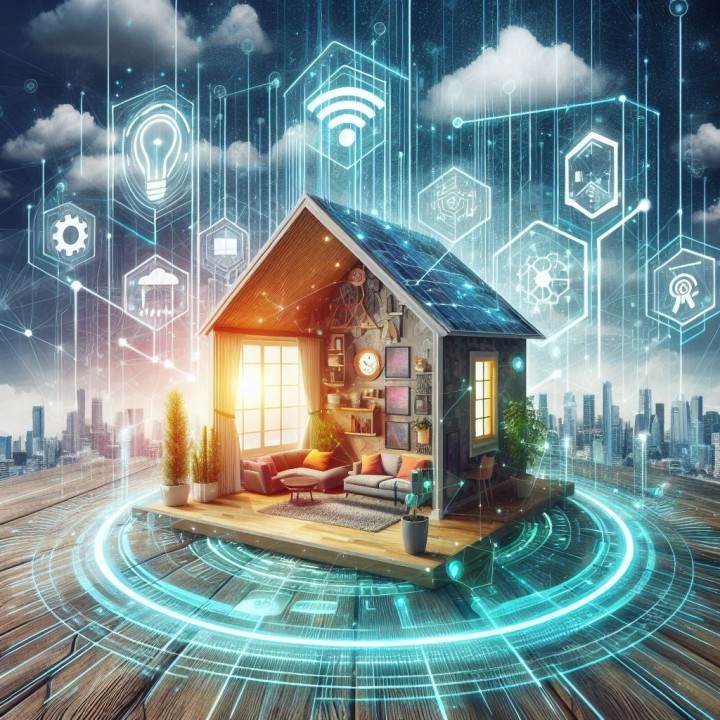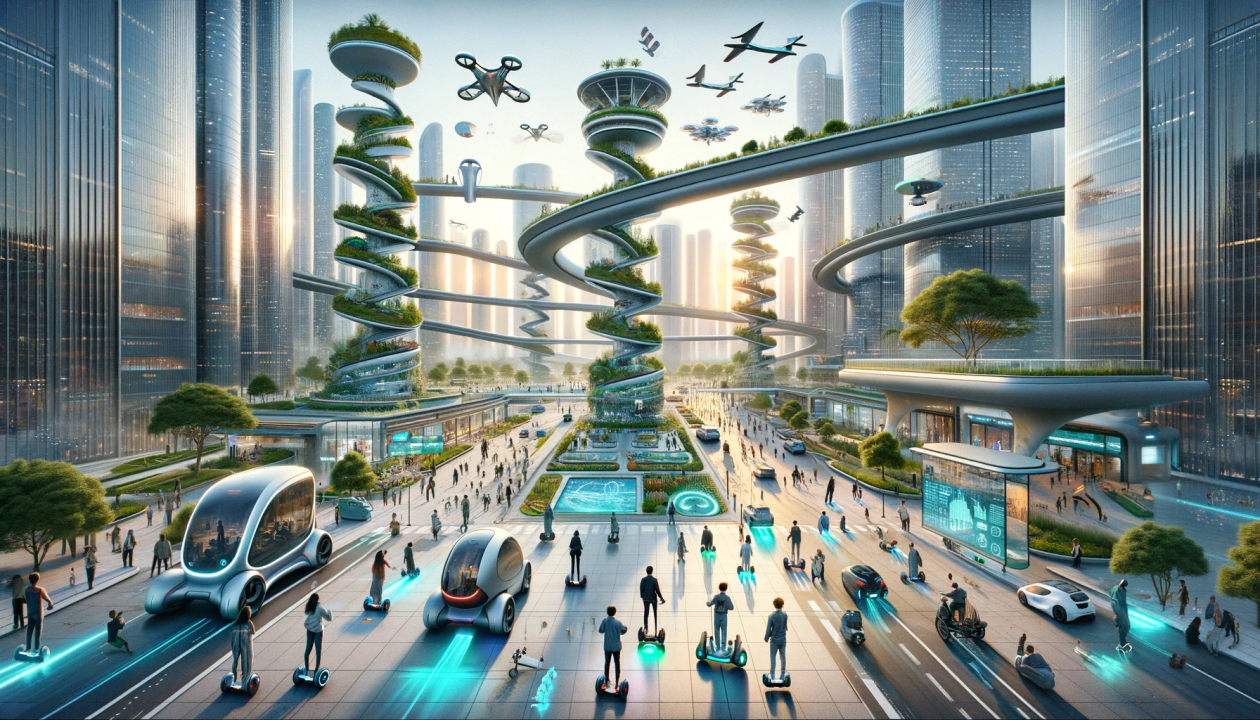Introduction:
In the ever-evolving landscape of technology, the Internet of Things (IoT) has emerged as a transformative force, revolutionizing the way we interact with the world around us. By connecting everyday objects to the internet and enabling them to collect, analyze, and exchange data, IoT is driving innovation across industries, from healthcare and manufacturing to transportation and agriculture. In this blog, we will explore three compelling examples of how the IoT is changing the game and reshaping our future.
- Smart Homes: Enhancing Comfort, Convenience, and Energy Efficiency
Overview: Smart home technology leverages IoT to create intelligent, interconnected ecosystems within our living spaces. From thermostats and lighting systems to security cameras and kitchen appliances, IoT-enabled devices are revolutionizing the way we interact with our homes.

Example: Smart Thermostats Smart thermostats, such as the popular Nest Learning Thermostat, utilize IoT technology to learn users’ preferences and adjust temperature settings accordingly. By analyzing data such as occupancy patterns, weather forecasts, and energy usage, these devices optimize heating and cooling systems for comfort and energy efficiency. Users can control their thermostats remotely via smartphone apps, allowing them to adjust settings, monitor energy consumption, and receive alerts for potential issues.
Example: Home Security Systems IoT-powered home security systems offer advanced features such as motion detection, facial recognition, and real-time surveillance. Devices like Ring Video Doorbell and Arlo Security Cameras provide homeowners with peace of mind by allowing them to monitor their property from anywhere, receive instant alerts for suspicious activities, and communicate with visitors remotely. These systems not only enhance security but also serve as valuable deterrents against potential threats.
Example: Smart Lighting: IoT-enabled smart lighting solutions, such as Philips Hue and LIFX, offer customizable lighting experiences tailored to users’ preferences and lifestyles. With features like color-changing bulbs, scheduling, and voice control via virtual assistants like Amazon Alexa and Google Assistant, these systems enhance ambiance, improve productivity, and promote energy conservation.
Benefits:
- Enhanced Comfort: Smart home devices offer personalized experiences tailored to users’ preferences, creating comfortable and convenient living environments.
- Improved Energy Efficiency: IoT-enabled devices optimize energy usage, reducing utility bills and environmental impact.
- Enhanced Security: Smart home security systems provide real-time monitoring and alerts, enhancing safety and peace of mind for homeowners.
- Convenience and Control: Remote access and voice control capabilities enable users to manage their homes effortlessly from anywhere, at any time.
- Healthcare: Revolutionizing Patient Care and Remote Monitoring
Overview: The IoT is revolutionizing healthcare by enabling remote patient monitoring, improving medical diagnostics, and enhancing the overall patient experience. From wearable devices and smart sensors to telemedicine platforms and electronic health records (EHRs), IoT is transforming every aspect of healthcare delivery.
Example: Wearable Health Trackers Wearable health trackers, such as Fitbit and Apple Watch, use IoT technology to monitor vital signs, track physical activity, and collect health-related data in real-time. These devices enable individuals to take a proactive approach to their health by providing insights into their fitness levels, sleep patterns, and overall well-being.
Example: Remote Patient Monitoring IoT-powered remote patient monitoring systems allow healthcare providers to monitor patients’ health status outside of traditional clinical settings. Devices like blood pressure monitors, glucose meters, and ECG monitors are equipped with sensors that collect and transmit data to healthcare professionals in real-time. This enables early detection of health problems, reduces hospital readmissions, and improves overall patient outcomes.
Example: Telemedicine Platforms Telemedicine platforms leverage IoT technology to facilitate virtual consultations, remote diagnosis, and treatment delivery. Through video conferencing, secure messaging, and digital health records, patients can access healthcare services from the comfort of their homes, eliminating the need for in-person visits and reducing healthcare costs.
Benefits:
- Improved Patient Outcomes: IoT-enabled healthcare solutions enable early detection of health issues, personalized treatment plans, and proactive interventions, leading to better patient outcomes.
- Enhanced Access to Care: Telemedicine platforms and remote monitoring systems improve access to healthcare services, especially for individuals in underserved or remote areas.
- Cost Savings: Remote monitoring and telemedicine reduce healthcare costs associated with hospital admissions, emergency room visits, and unnecessary tests or procedures.
- Transportation: Revolutionizing Mobility, Safety, and Efficiency
Overview: The IoT is transforming the transportation industry by enabling connected vehicles, smart infrastructure, and intelligent transportation systems. From autonomous vehicles and traffic management solutions to fleet management platforms and ride-sharing services, the IoT is driving innovation and reshaping the future of mobility.

Example: Connected Vehicles Connected vehicles are equipped with IoT sensors, GPS technology, and wireless communication capabilities that enable them to collect and exchange data with other vehicles, traffic signals, and infrastructure. These vehicles can provide real-time information about road conditions, traffic congestion, and weather patterns, allowing drivers to make informed decisions and navigate efficiently.
Example: Smart Traffic Management Smart traffic management systems leverage IoT technology to optimize traffic flow, reduce congestion, and improve road safety. Sensors embedded in roads, traffic lights, and vehicles collect data on vehicle speeds, traffic volumes, and congestion levels.
Example: Fleet Management Solutions: IoT-powered fleet management solutions enable businesses to monitor and manage their vehicles more effectively. GPS tracking, telematics, and vehicle diagnostics allow fleet managers to track vehicle locations, monitor driver behavior, and optimize route planning and fuel efficiency.
Benefits:
- Improved Safety: IoT-enabled transportation solutions enhance safety by providing real-time traffic information, collision warnings, and emergency assistance.
- Enhanced Efficiency: Smart traffic management systems and fleet management solutions optimize traffic flow, reduce congestion, and improve fuel efficiency.
- Greater Convenience: Connected vehicles and mobility services offer personalized travel experiences, seamless navigation, and on-demand transportation options.
- Environmental Sustainability: IoT-enabled transportation solutions help reduce emissions, minimize traffic congestion, and promote sustainable mobility practices.
Conclusion: Embracing the IoT Revolution
The Internet of Things is revolutionizing industries and reshaping the way we live, work, and interact with our surroundings. From smart homes and healthcare to transportation and beyond, IoT is driving innovation, enhancing efficiency, and improving quality of life. By embracing the IoT revolution and leveraging its transformative potential, we can unlock new.

